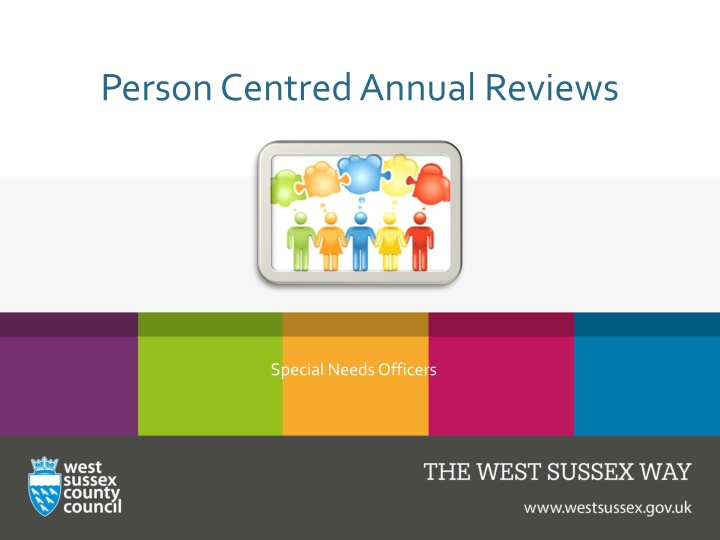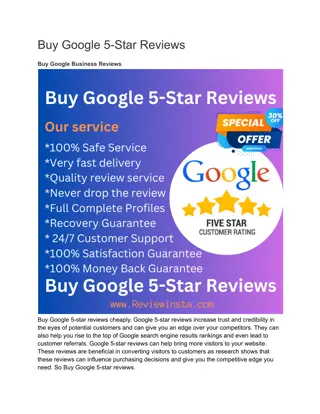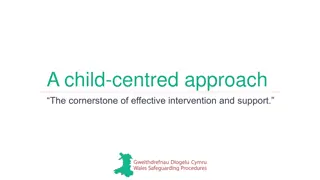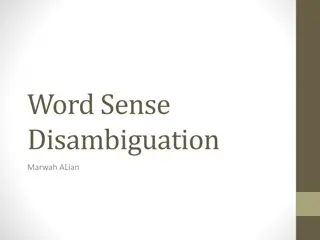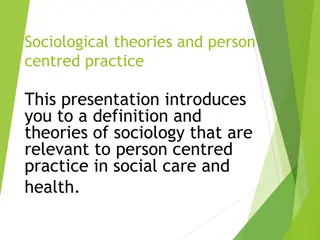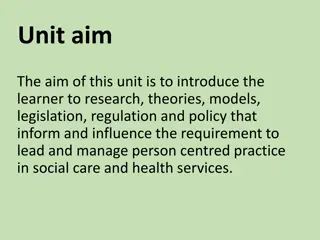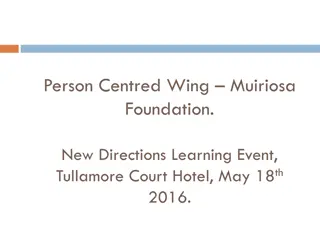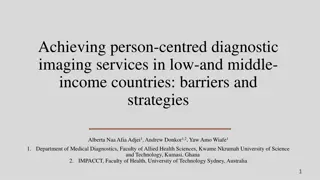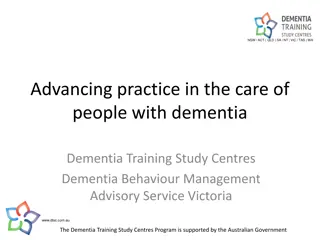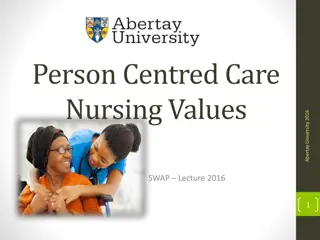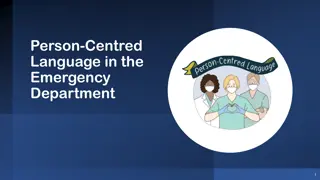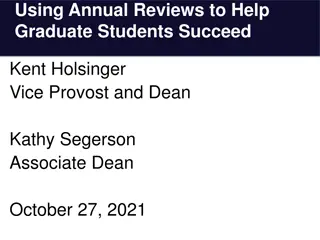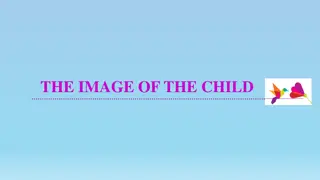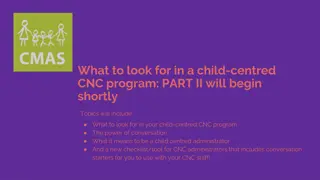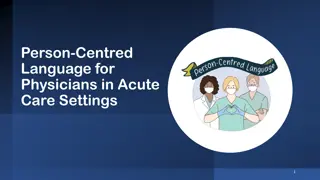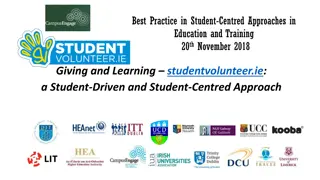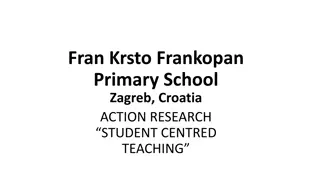Promoting Person-Centred Approaches in Annual Reviews for Special Needs Officers
Explore the significance of person-centred planning in annual reviews for individuals with special needs, focusing on involving the individual in decision-making, building on their strengths, and ensuring their voice is heard. Learn how to implement a person-centred approach effectively and promote greater choice and control for children and young people.
Download Presentation

Please find below an Image/Link to download the presentation.
The content on the website is provided AS IS for your information and personal use only. It may not be sold, licensed, or shared on other websites without obtaining consent from the author.If you encounter any issues during the download, it is possible that the publisher has removed the file from their server.
You are allowed to download the files provided on this website for personal or commercial use, subject to the condition that they are used lawfully. All files are the property of their respective owners.
The content on the website is provided AS IS for your information and personal use only. It may not be sold, licensed, or shared on other websites without obtaining consent from the author.
E N D
Presentation Transcript
Person Centred Annual Reviews Special Needs Officers
This presentation will cover: The features of a person centred approach to annual reviews Why we use a person centred approach When and how to collect views Good examples of person centred approaches and when it is appropriate to use them How to incorporate this in an Annual Review
What is Person Centred Planning? Person centred planning (PCP) provides a way of helping a person plan all aspects of their life, thus ensuring that the individual remains central to the creation of any plan which will affect them.
Code of Practice 9.176 (Cof P 2015) - The meeting must focus on the child or Young person s progress to achieving the outcomes, specified in the EHC Plan and on what changes might need to be made to the support that, is provided to help them achieve those outcomes or whether changes are needed to the outcome themselves. Chapter 1 of the Code of Practice says: You must have regard to the views, wishes and feelings of the child or young person . The child or young person must participate as fully as possible in decisions and be provided with the support and information necessary to make those decisions. Greater Choice and control for Children and Young People Children, parents and YP should be supported to engage fully in the review meeting It ensures the meeting and plan is focused on what is positive and possible and uses solution focused thinking Children and Young people are actively involved in making decisions about their future. Their voice is at the centre.
Using Child and Young Person Centred Approaches will make them feel: Involved in decision- making They matter Valued Listened to and heard Included They have some control Empowered More likely to engage in any plans made
What do we want to know? The child / young person s Hopes & Dreams Things the child/young person finds difficult and how to help them What s going well? Things would be better if What are their next steps? Which people will support them?
How could you get the child/young person to share their views? Annual Review young person/child voice booklet. https://westsussex.local- offer.org/information_pages/228-settings- applying-for-an-education-health-and- care-needs-assessment-ehcna-ehcp- forms-and-paperwork Power point Sound-byte You Tube or video Any other creative ways the C/YP can think of .. PATH https://westsussex.local- offer.org/information_pa ges/128-person-centred- planning-pcp-path- training-videos Mind-Map or poster
Child/Young Person-Centred Processes in Action https://www.youtube.com/watch?v=bkwBSF0nxiY (watch in Google Chrome) While you are watching, you could think about: What is done to ensure that the child/young person feels comfortable and at the centre of the process? What strategies are used for gathering everyone s views? How is the meeting structured? Are you using any of these things in your practice?
Things you might have noticed Room prepared to be comfortable and inviting, (snacks!) Chairs in a horseshoe Everyone was greeted Child led and encouraged to have a friend with them Labelled photos Child and adults all interacting 2 facilitators Mix of photos, text, scribing Set and agreed yearly actions, linking to EHCP Outcomes Parents found it a positive way to review and set actions Formal EHCP outcomes reviewed afterwards
Examples of PCP Approaches (1): Power-point, Mind-Map or Poster These work best if the child/young person is given creative freedom, with or without support They can make the decisions about the: Saying what they think Format Format and style and style FONT Backgrounds Saying what they want to say, their way Use of photos and graphics
Examples of PCP Approaches (2): PATHs (or .. Planning Alternative Tomorrows with Hope) An Example of a completed PATH .
When to collect the Child or Young Persons Views: This should be competed 2 weeks before the review leaving time to complete in chunks if needed. Where possible the child/young person should have choice over how they record their views Where possible the child/young person should have choice over if they want to and how they present on the day.
How can you use the child/young persons views in the Annual Review paperwork?
How can you use the child/young persons views in the Annual Review paperwork?
Top Tips (1) Before the Annual Review Get the views from the child/young person, 3 weeks before the Annual Review Ask them how they want to give their views and be as child/young-person focused as possible Circulate the child/young person s views to all parties, with all the other Annual Review documents, 2 weeks before the Annual Review
Top Tips (2) - Scene-setting Ask the child/young person if they feel able to attend their Annual Review and what part they would like to play within it and also at what point they want to join If the child/young person is only coming into the Annual Review for part of the meeting, bring them in the second part of the meeting, so everyone leaves at the same time
Top Tips (3) The child/young person s experience If the child/young person presents in the Annual Review, thank them and praise them for their contribution Remember that the Annual Review should be positive and encouraging, even if there are issues
Thank you for working through this presentation ??? Questions and thoughts? Please contact your Special Needs Officer - SNO, who will be happy to help you
